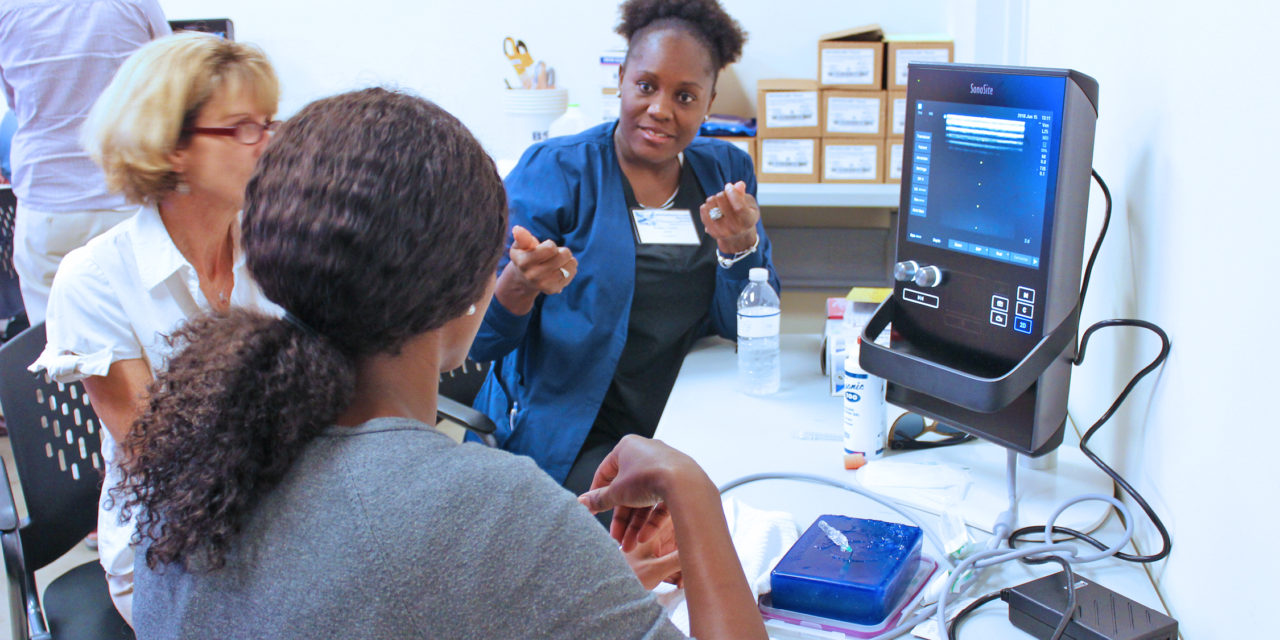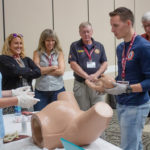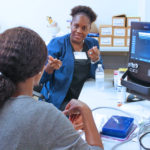Expanding the Menu Beyond the Sandwich: Defining Effective Feedback
Feedback is a process to provide learners with information about their performance based on direct observations. Ende defines feedback as information describing students’ or officers’ performance in a given activity that is intended to guide their future performance in that same or a related activity. [1] Feedback is considered a pillar of training. It encourages and enhances the learners’ knowledge, skills and professional performance.[2] There are three components necessary for effective feedback: giving feedback, receiving feedback and soliciting feedback. All three components must be present for the learner to achieve improvement. The absence of feedback can be misinterpreted as approval or can result in the learner using self-assessment. [2] In addition, medical students and residents have stated that feedback, when given effectively, is useful in helping them gauge their performance and making action plans for improvement.3 Medical educators need to be well versed in the different ways of providing feedback, and learners should also be receptive in its many forms. This article aims to define feedback and its components and review different techniques to give feedback in medical education settings.
An important first step in effective feedback is preparation. The educator must prepare the learner to receive feedback by establishing objectives, goals and expectations. The setting is also important: it should be private. In addition, feedback should be timely and frequent. The learner should receive feedback as soon as possible to give them the opportunity to remediate behaviors. It should also be based on direct observations so the teacher can give specific and descriptive examples. Lastly, another step of effective feedback is the delivery. It should clearly be labeled as feedback and should be a two-way conversation that is balanced with positive and negative comments about the behaviors that can be changed. The delivery of feedback should be modulated to the learner’s temperament, personality and generation. Furthermore, the educator must be selective of the behaviors they want to address. Focusing on one or two issues will help the learner understand the situation and how to address it without feeling overwhelmed. All of these will promote self-assessment, self-reflection and self-directed lifelong learning.4
Feedback can either be formal or informal. Formal feedback is a planned activity, such as semi-annual evaluations. Informal feedback occurs in the moment of a particular educational opportunity, such as feedback after a procedure that is completed in the clinical setting. Feedback can be discussed as being either formative or summative. Formative feedback is usually provided in real time during or directly after a specific educational moment and is focused on specific behaviors and skills. Summative feedback usually occurs at the end of a course or rotation and provides an end assessment of the learner’s performance. Competency-based education hinges on these types of feedback.
Different techniques have been developed to provide structure and positive feedback. Below are some examples of commonly-used feedback techniques.
Feedback Sandwich: This technique is one of the most used techniques. It is a way to give negative feedback in between two sets of positive feedback. The sandwich technique is one of the easiest methods to give feedback, making it ideal for novice educators, but it may be disadvantageous as it is a unidirectional technique and doesn’t ask the learner for self-reflection or their plan for success.[5]
Ask-Tell-Ask: This is an example of a bidirectional feedback technique—an alternative to the feedback sandwich. It is an excellent way to begin the feedback conversation by asking the learner for a self-assessment. The teacher then tells by acknowledging the concerns the learner has identified, states their observations as an educator, provides feedback about one thing done well and an area of improvement, followed by focused teaching. Last, the educator asks the learner if they understood the teaching and feedback and discusses the learner’s plan for improvement. 5
ART: Ask, Respond, Tell: This technique is also bidirectional. The educator first asks if the learner is ready to receive feedback and asks for a self-assessment. The teacher then responds by summarizing the learner’s responses and provides 1-2 educational moments. Lastly, the educator tells the learner their assessment with specific actions and language.[6]
Pendleton: This bidirectional technique creates a dialogue about feedback by first asking the learner for a self-assessment with particular attention to their positives and negatives. The teacher then provides additional comments and moves to areas of improvement and a plan for improvement. [5]
One-Minute Preceptor: This is a teaching technique that incorporates feedback into its model. It is also known as the 5-step micro-skills model. It asks the learner to make a commitment to the diagnosis, then the teacher asks questions to gather supportive data, teaches a general rule, provides constructive feedback highlighting what was well done, and then corrective comments explaining what was done right or wrong.[5]
In summary, feedback should be a timely, two-way conversation designed to address specific behaviors and develop action plans. Medical educators should familiarize themselves with available techniques to give effective feedback. Giving feedback will only become easier with practice and time.
Pictured: Feedback being provided to learners at EMLRC’s Advanced Practice Provider (APP) Skills Camp in 2018.
References:
- Ende J. Feedback in Clinical Medical Education. JAMA. 1983;250(6):777-781.
- Mandhane N, Ansari S, Shaikh T, Deolekar S. Positive feedback: a tool for quality education in field of medicine. Int J Res Med Sci. 2015;3(8):1868-1873. doi:10.18203/2320-6012.ijrms20150293
- Ramani S, Krackov SK. Twelve tips for giving feedback effectively in the clinical environment. Med Teach. 2012;34(10):787-791. doi:10.3109/0142159X.2012.684916
- Kelly E, Richards JB. Medical education: Giving feedback to doctors in training. BMJ. 2019;366(July):1-5. doi:10.1136/bmj.l4523
- Jug R, Jiang XS, Bean SM. Giving and receiving effective feedback a review article and how-to guide. Arch Pathol Lab Med. 2019;143(2):244-250. doi:10.5858/arpa.2018-0058-RA
- Cochran N, Davis D, Laponis R, Myers K, White MK. The ART of Providing Effective Feedback. 2014;(859).
This article is part of the following sections:












